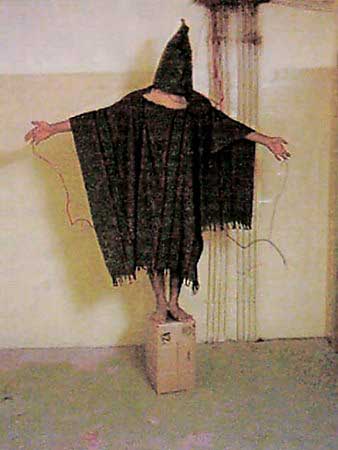Monday, May 4th, 2009
Transforming the Book
 Last weekend I went to this really fantastic exhibition at the Bellevue Arts Museum (BAM). All of the artists in this exhibition create their art out of printed books and book covers. Using books as a medium for sculptures gives new definition to the word “volume,” doesn’t it?
Last weekend I went to this really fantastic exhibition at the Bellevue Arts Museum (BAM). All of the artists in this exhibition create their art out of printed books and book covers. Using books as a medium for sculptures gives new definition to the word “volume,” doesn’t it?
I particularly liked this work on the left, Petra, by Guy Laramée (2007). I’ve always thought Petra was a fascinating place (I’ve even blogged about it here, where you can see a picture of the actual treasury that inspired Laramée). Another work in the show by Laramée consisted of two rows of stacked Encyclopedia Brittanicas, with one side of each row carved like a canyon. (You can see a picture of the piece and an artist statement here).
There was also a striking work by the Scottish artist Georgia Russell. Most of Russell’s works involve cutting books, book covers, and photographs. The one shown here, Leurs Secrets (2007) is similar to the one in the BAM’s show. You can see more of Russell’s work here.
 The exhibition also had some “excavated books” by James Allen. I thought this one, Churches of our Fathers (2007) was especially beautiful and striking.
The exhibition also had some “excavated books” by James Allen. I thought this one, Churches of our Fathers (2007) was especially beautiful and striking.
You really should check out Jennifer Shoshbin’s altered books too. A few of these were in the show too. Her style and idea are an interesting mixture of vintage and contemporary, which is really fun.
It was interesting to go to this show and think about the history of books and print. My husband is a graphic designer, and we often have talked about the demise of printed books and printed material. I wonder how long it will take for most books to be produced online or through digital format (which is sad, since I love holding books and flipping through their pages). In a way, using books as an artistic medium in this show (and placing those books in a museum, the place where artifacts are preserved) seemed to historicize printed books even more. And some of the words used to describe the art (e.g. “excavated”) further antiquated the book medium. Although I loved this show (I would wholeheartedly recommend it to anyone who lives in the Seattle area), I also couldn’t help but feel a twinge of sadness for the future of books and printed material.
What do you think about these artists and their works? What do you think about the demise of printed books?





